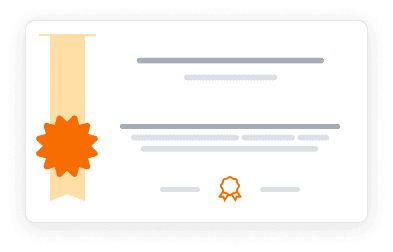This course is part of Business Statistics and Analysis Specialization.
This course cannot be purchased separately - to access the complete learning experience, graded assignments, and earn certificates, you'll need to enroll in the full Business Statistics and Analysis Specialization program. You can audit this specific course for free to explore the content, which includes access to course materials and lectures. This allows you to learn at your own pace without any financial commitment.
4.7
(2,591 ratings)
71,319 already enrolled
Instructors:
English
پښتو, বাংলা, اردو, 2 more
What you'll learn
Calculate and interpret descriptive statistics including mean, median, standard deviation, and variance
Create and analyze box plots to visualize data distributions
Understand the relationship between variables using correlation and covariance measures
Apply the Normal distribution to solve business problems using Excel functions
Work with Binomial and Poisson distributions for discrete event analysis
Understand the Central Limit Theorem and its importance in statistical inference
Skills you'll gain
This course includes:
2.7 Hours PreRecorded video
26 assignments
Access on Mobile, Tablet, Desktop
FullTime access
Shareable certificate
Get a Completion Certificate
Share your certificate with prospective employers and your professional network on LinkedIn.
Created by
Provided by

Top companies offer this course to their employees
Top companies provide this course to enhance their employees' skills, ensuring they excel in handling complex projects and drive organizational success.





There are 4 modules in this course
This foundational course introduces the essential concepts of business statistics with a focus on practical application rather than mathematical theory. The curriculum begins with descriptive statistics, teaching students how to summarize data using measures of central tendency (mean, median, mode) and measures of spread (range, standard deviation, variance). Learners master the creation and interpretation of box plots and apply rule-of-thumb techniques and Chebyshev's theorem to better understand variation in data. The course then explores correlation and covariance, emphasizing the critical distinction between correlation and causation in business contexts. The second half of the course focuses on probability and statistical distributions, with particular attention to the Normal distribution and its applications. Students learn to work with Excel functions like NORM.DIST and NORM.INV to calculate probabilities and outcomes. The course concludes with an introduction to the Binomial and Poisson distributions and the Central Limit Theorem, establishing the connection between sample and population data. Throughout the course, concepts are reinforced through business-relevant examples and Excel-based applications.
Basic Data Descriptors
Module 1 · 5 Hours to complete
Descriptive Measures of Association, Probability, and Statistical Distributions
Module 2 · 4 Hours to complete
The Normal Distribution
Module 3 · 5 Hours to complete
Working with Distributions (Normal, Binomial, Poisson), Population and Sample Data
Module 4 · 5 Hours to complete
Fee Structure
Individual course purchase is not available - to enroll in this course with a certificate, you need to purchase the complete Professional Certificate Course. For enrollment and detailed fee structure, visit the following: Business Statistics and Analysis Specialization
Testimonials
Testimonials and success stories are a testament to the quality of this program and its impact on your career and learning journey. Be the first to help others make an informed decision by sharing your review of the course.
Frequently asked questions
Below are some of the most commonly asked questions about this course. We aim to provide clear and concise answers to help you better understand the course content, structure, and any other relevant information. If you have any additional questions or if your question is not listed here, please don't hesitate to reach out to our support team for further assistance.



